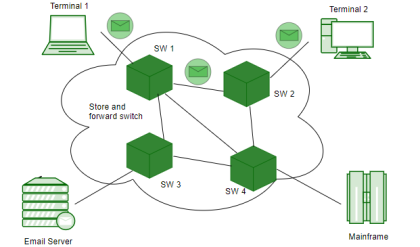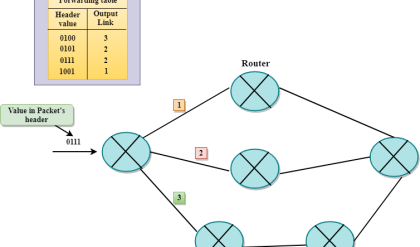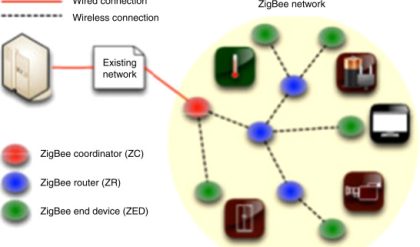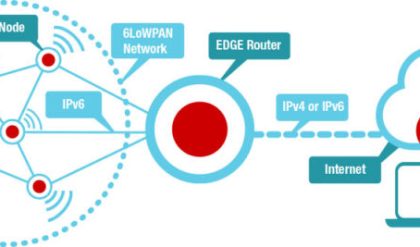A communication network is the pattern of directions in which information flows in the organization. Channels of communication (networks by which information flows) are either formal networks or informal networks. Formal networks follow the authority chain and are limited to task-related communications. The informal network (grapevine) is free to move in any direction, skip authority levels, and is as likely to satisfy group members’ social needs as it is to facilitate task accomplishments.
Types of Communication Networks in Organizations
Types of Communication Networks in Organizations is shown below

Chain Network
In chain network, communication travels up and down through the hierarchy. Each person communicates with only the person directly above or below in terms of reporting relationships. The chain network rigidly follows the formal chain of command.
Y Network Communication
Y Network
In the Y network, the flow of communication resembles an upside down Y; information flows upward and downward through the hierarchy, widening to encompass the number of employees reporting to a supervisor.
Wheel Network
In a wheel network, information flows to and from a single person. Employees in the group communicate primarily with that person rather than with each other. Such a communication network is a fast means of getting information to employees, since the person at the hub of the wheel can do so directly and efficiently. The wheel network relies on the leader to act as the central conduit (channel) for the entire group’s communication.
The chain network, the Y network and the wheel network are fairly centralized in that most messages must flow through a pivotal (essential, crucial) person in the network. In the wheel network, the most centralized, all messages must flow through the individual at the centre of the wheel. In the chain network, some members can communicate with more than one member of the network, but the individual in the centre of the chain still tends to emerge as the controller of the messages. In the Y network, the member at the fork of the “Y” usually becomes the central person in the network.
Circle Network
In a circle network, employees communicate only with adjoining members of the organization. The circle network is analogous to a group working in a physical arrangement such that workers can communicate with their immediate neighbour but not with others in the group.
All channel network communication examples
The All-Channel Network or the Star Network
In an all-channel network, communications flow upward, downward and laterally among all members of the group. This pattern of communication supports an egalitarian, (equal, unrestricted) participative culture and fosters (promote, cultivate) cross-functional efforts.
The all-channel network is best if you are concerned with having high member satisfaction.
The circle network and the all-channel network are more decentralized in that there is freer communication among the various members. In the circle network, each member can communicate with the individual on either side. The all-channel network is the most decentralized of the networks; each member can communicate with any other member.





